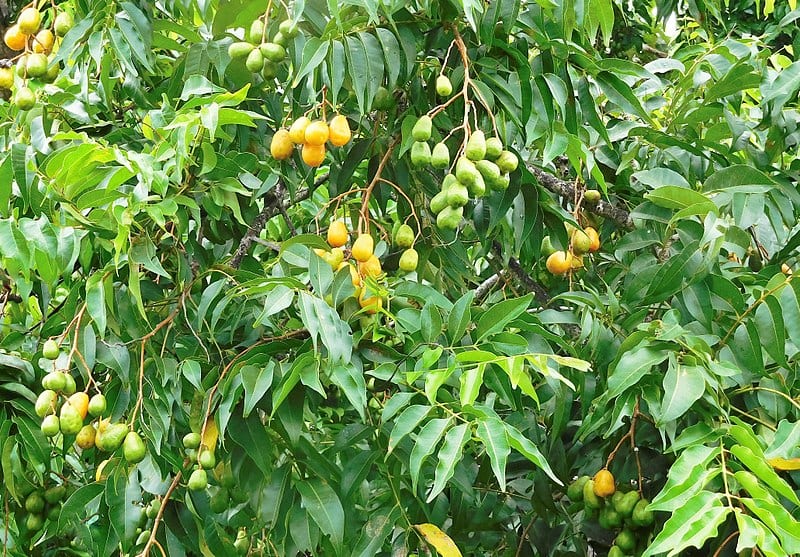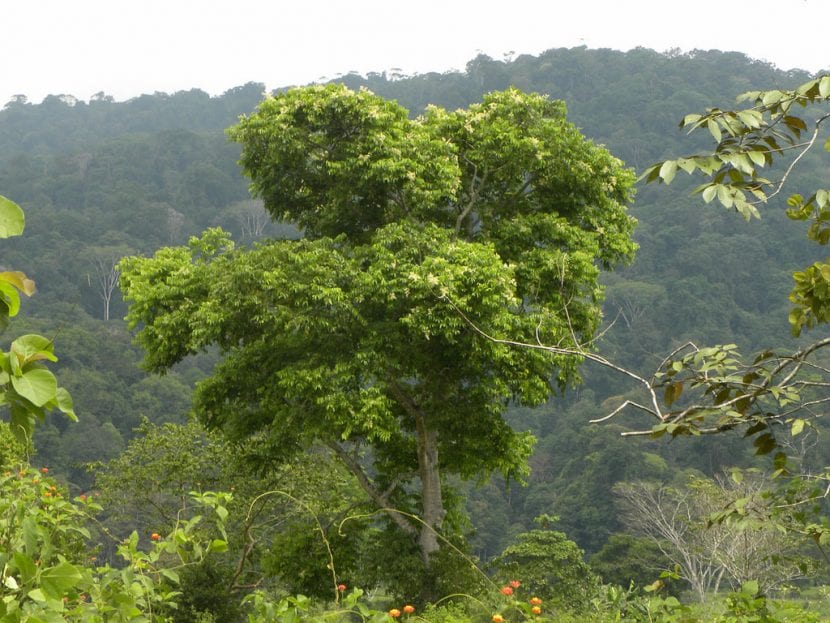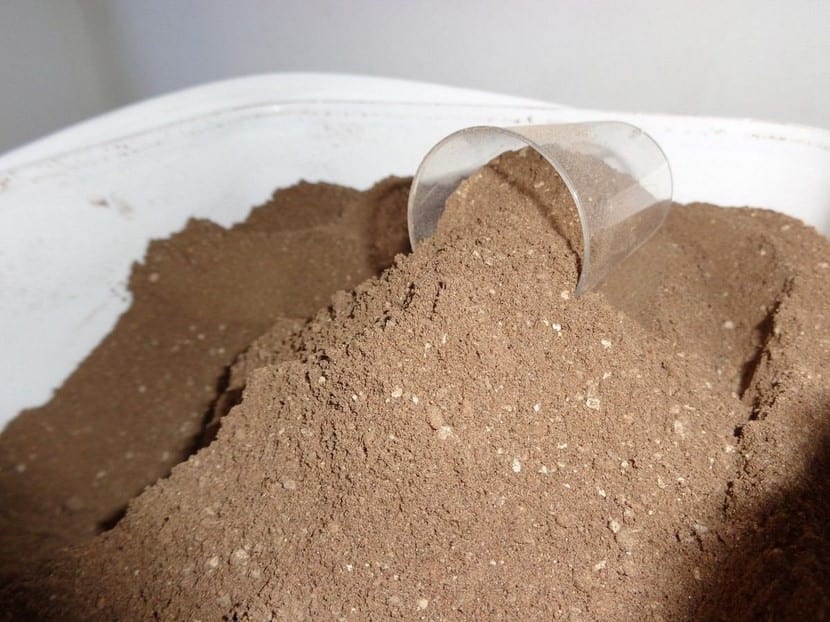
Image - Wikimedia / Filo gèn '
El jobo It is a fruit tree that is grown so little that it is rare and difficult to find for sale. However, as long as the weather is good, it is a very interesting plant, which in addition to giving very good shade, produces fruits with a very pleasant flavor.
But since it is rare, there is very little information about it. So if you have come this far looking for the characteristics and their care, you are in the right place. Then you will be able to read the file that we have prepared for you 🙂.
Origin and characteristics

Image - Flickr / Reinaldo Aguilar
Our protagonist is an evergreen tree native to tropical America, including the West Indies. Currently it has managed to naturalize in the tropical forests of Africa, India and Indonesia. Although its scientific name is Mombin spondias, It is known more as jobo, hobo or yuplon.
It is characterized by reach a maximum height of 25 meters, with a trunk diameter of up to 35-40cm. The bark is brown or gray, rough with longitudinal ridges, and with spiny projections. The leaves are 18 to 43cm long, foliolate. The leaflets are oblong, lanceolate or elliptical, with the entire margin, glabrous except the main and secondary veins that are seen in the bundle.
The flowers are grouped in pubescent inflorescences, cream or white in color. The fruit is oblong, 2-4cm long, rounded and yellow or orange. when it matures.
How do you take care of yourself?
If you want to get a copy, we recommend providing the following care:
Location
The jobo, being a tropical tree, can only be grown outside in frost-free climates. If you live in an area where it is not cold, you should plant it in full sun or in semi-shade, at a distance of 5-6 meters from walls, pipes and any construction.
Land
Soil it has to be fertile, well drained and slightly acidic (pH of 6). In limestone soils it may have iron chlorosis (lack of iron), which would manifest itself with the yellowing of the leaves, leaving the nerves green.
Irrigation
Irrigation it has to be frequent, since it does not withstand drought. The ideal would be to water it every 2 days during the hottest time of the year and every 4 days the rest. You have to use rainwater or lime-free. In the case of not being able to obtain it, you can add the liquid of half a lemon or a few drops of vinegar in a liter of water.
Subscriber

Guano powder.
During the flowering and fruiting season, it is highly recommended to fertilize the jobo with organic fertilizers.and guano or chicken manure (If you can get the latter fresh, let it dry in the sun for at least a week; this will prevent it from burning the roots). You can also add egg and banana peels, tea bags, expired vegetables, wood ash.
Multiplication
This tree multiplies by seeds, which must be sown as soon as the fruit is collected or compiled following this step by step:
- The first thing to do is, of course, eat the fruit 🙂.
- Second, the seeds are cleaned well with water and a scouring pad that will have had a drop of dishwasher on it.
- Third, they are rinsed off, removing all traces of foam.
- Fourth, a pot of about 10,5cm in diameter is filled with universal growing substrate for plants and watered.
- Fifth, a maximum of 2 seeds are placed and covered with a thin layer of substrate.
- Sixth, the surface of the substrate is sprayed with water, and the seedbed is placed in semi-shade.
If everything goes fine, will germinate in 2-3 weeks.
Rusticity
Can't stand the cold. The minimum temperature must be 18ºC or higher. As for the maximum, it is preferable that it is not + 30ºC.
What uses does it have?
Ornamental
The jobo is a very ornamental tree, which It serves both to provide shade and to have as tall hedges. In addition, although due to its characteristics it is not a pot plant all its life, for many years it can be grown in it if it is transplanted every 2 years, which is very interesting if you want to decorate the patio, for example.
Culinary
The fruit can be consumed fresh or in juices. You just have to peel it and enjoy its flavor 🙂.
Medicinal
But without a doubt its best known use is medicinal. From this plant both the leaves and the fruits are used, as well as the bark. Let's see what each one is for:
- Leaves: in infusion it is used for cases of diarrhea, inflammation, venereal diseases, labor pains.
- Fruits: the direct application of the fruits acts on skin inflammations, helps fight gum infections, and consumption prevents intestinal and bladder diseases.
- Cortex: taken as a decoction, it has healing, hemostatic and astringent properties.
Other uses
From the ash of the wood of the trunk of the jobo, a lye is obtained in Colombia by adding water, to which beef tallow was added and then subjected to a low heat until obtaining an artisan soap.
Have you heard of this fruit tree?
hello good evening if I have heard about this fruit and I am interested in obtaining all the possible information
if they did.
Thank you
It has to be the seed of the jobo dry, and how to obtain the seeds? Can you make a bonsai from the jobo tree?
Thanks in advance for your prompt reply!
Hi Ken.
Once the fruits mature, they will already have the seeds inside. These are cleaned with water and then planted 🙂
Regarding whether bonsai can be made, in principle no, since the leaves are large. But it could be kept in a pot, as a shrub or tree.
Greetings.
The seed of the jobo has been the stone of the fruit?
Hello Maribel.
If that is.
Greetings.
Thank you very much for the information. Is the dwarf jobo and the thorns the same? I have a dwarf jobo and it is bearing fruit again. I am selling them locally but I want to promote with my clients that they re-sow the seed and thus recover this plant that has been lost in Puerto Rico.
Apart from my question about the difference between both types of jobo, I will tell you that I am going to make a little brochure to give to my clients sharing the information you give us here. If you give me your email address, I can send it to you, if it helps you to spread the word.
Thank you very much for this info. It is very good and super useful
What is the publication date of the article? and where is it published?
Hi Jazmin.
This article was published on April 6, 2018, from Spain.
Greetings.